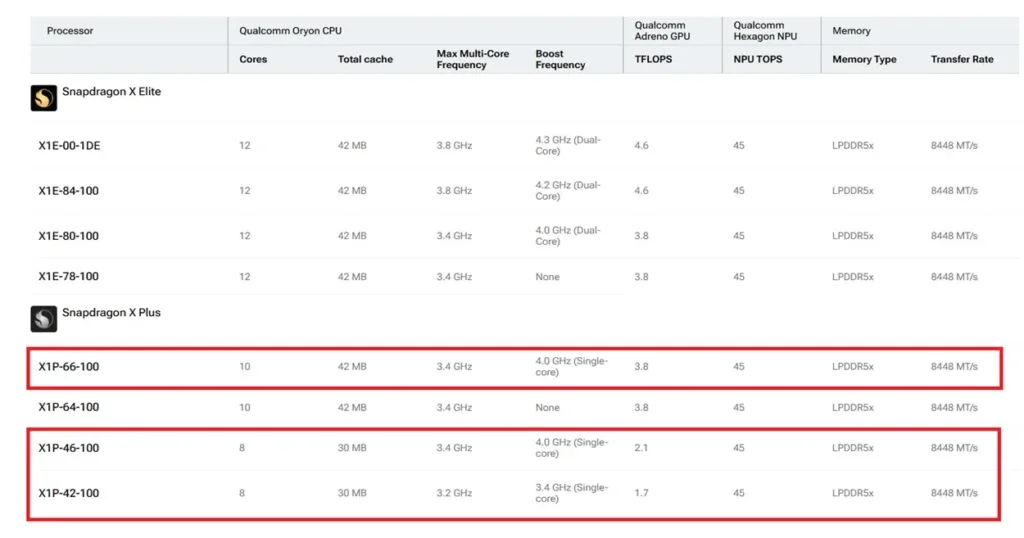
At IFA Berlin, Qualcomm unveiled three new Snapdragon X Plus chipsets designed to make Windows laptops more affordable. In this newly launched lineup, the number of CPU cores has been reduced, and GPU power has been significantly scaled back.
The Snapdragon X Plus (X1P-66-100) SKU includes 10 Oryon CPU cores (compared to 12 in the X Elite) and can boost a single core up to 4.0GHz. The Adreno X1-85 GPU provides graphics performance of up to 3.8 TFLOPs.
This new SKU is situated above the current Snapdragon X Plus variant (X1P-64-100). The primary distinction is the single-core boost of up to 4.0GHz, which is not available on the X1P-64-100 variant, while GPU performance remains unchanged.

Next, the Snapdragon X Plus (X1P-46-100) SKU features 8 Oryon cores with a total cache of 30MB (other SKUs offer 42MB). It can boost a single core up to 4.0GHz; however, the Adreno X1-45 GPU is less powerful, providing a total output of just 2.1 TFLOPs.
Lastly, the Snapdragon X Plus (X1P-42-100) SKU is the least powerful variant in the lineup. It also includes 8 Oryon cores with 30MB of total cache. Its standard frequency is 3.2GHz, with a single-core boost of up to 3.4GHz, a modest increase of 200MHz. The Adreno X1-45 GPU in this model is significantly weaker, capable of only 1.7 TFLOPs, representing a 50% reduction in GPU power, which is quite substantial.
While the CPU performance on these new Snapdragon X Plus chipsets is expected to be strong, I’m not impressed by Qualcomm’s decision to cut GPU performance by half. The Adreno X1 GPU is already not the most powerful option in the PC market, and Qualcomm has opted to further diminish its capabilities.
That said, all Snapdragon X series laptops utilizing the new X Plus chipsets will support Copilot+ PC features. The NPU is uniform across all SKUs, providing up to 45 TOPS. Asus is set to release the Zenbook S 15 for $899 and the ProArt PZ13 for $1,099 featuring the new X Plus chipsets. Dell will also introduce the Inspiron 14 for $899 featuring this latest chipset.




